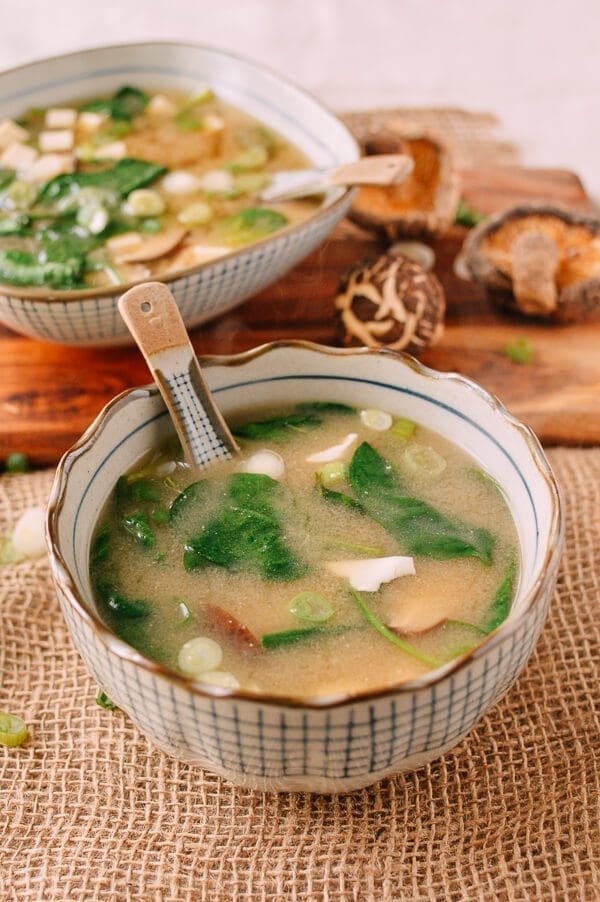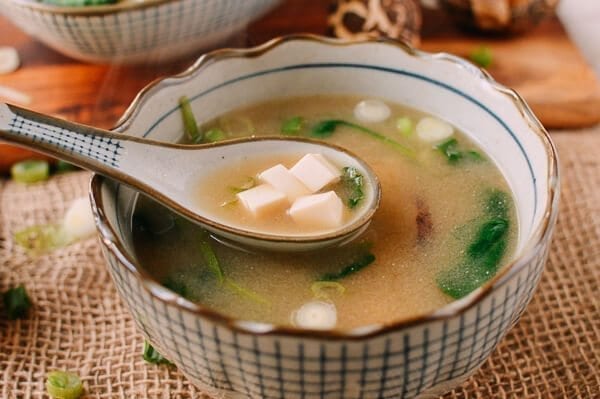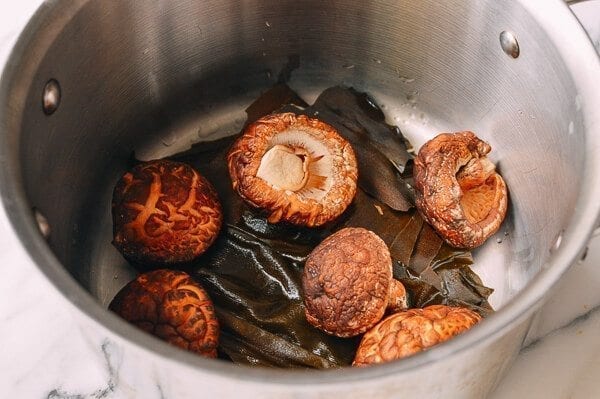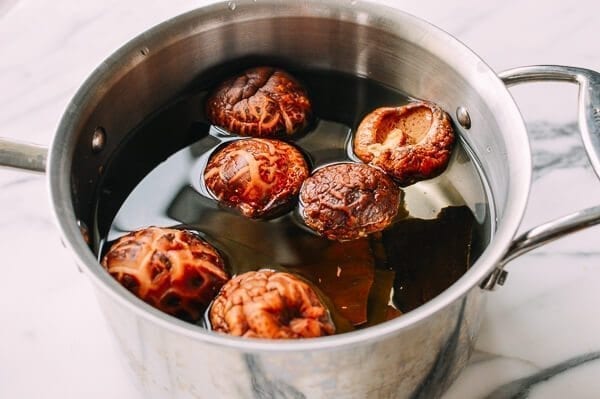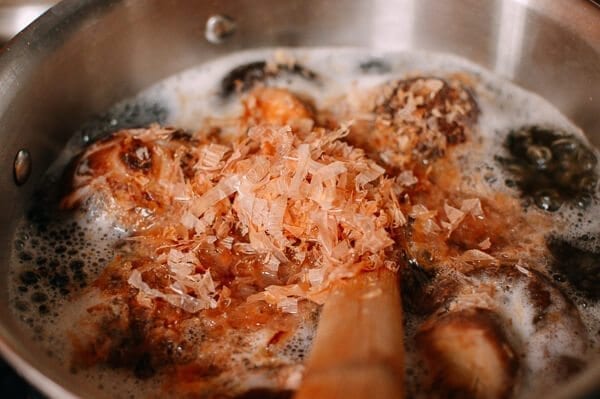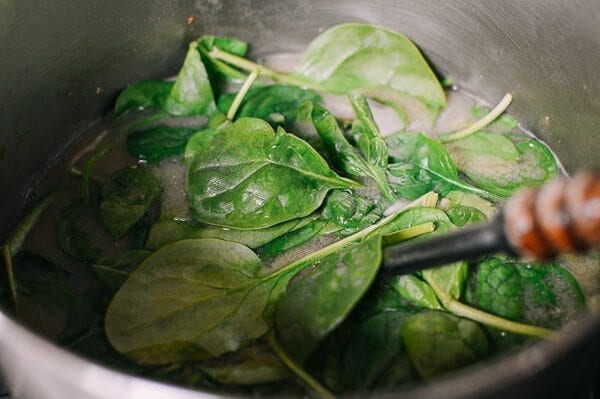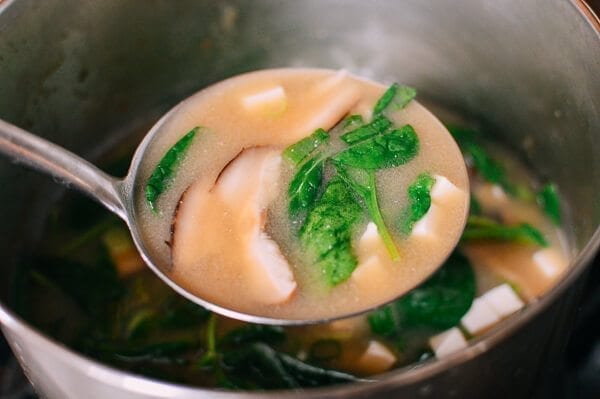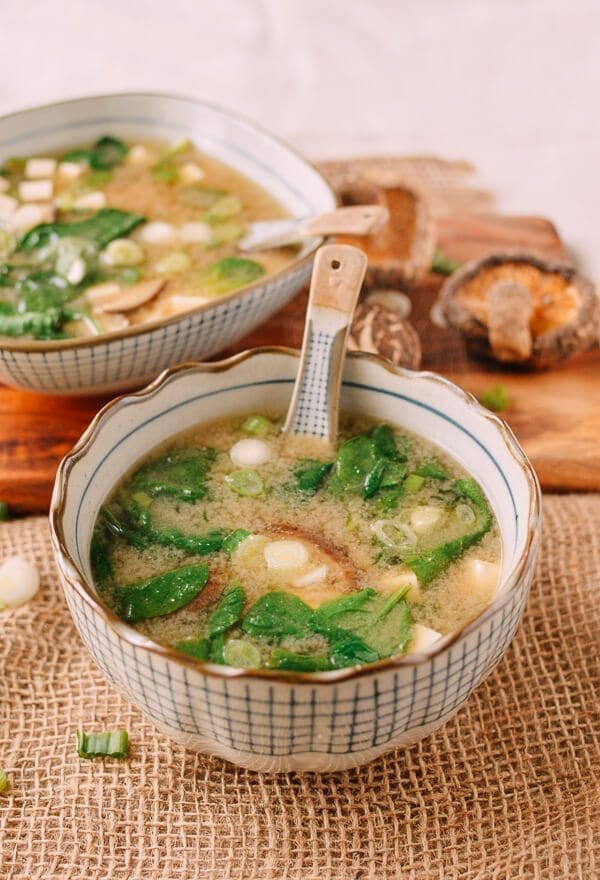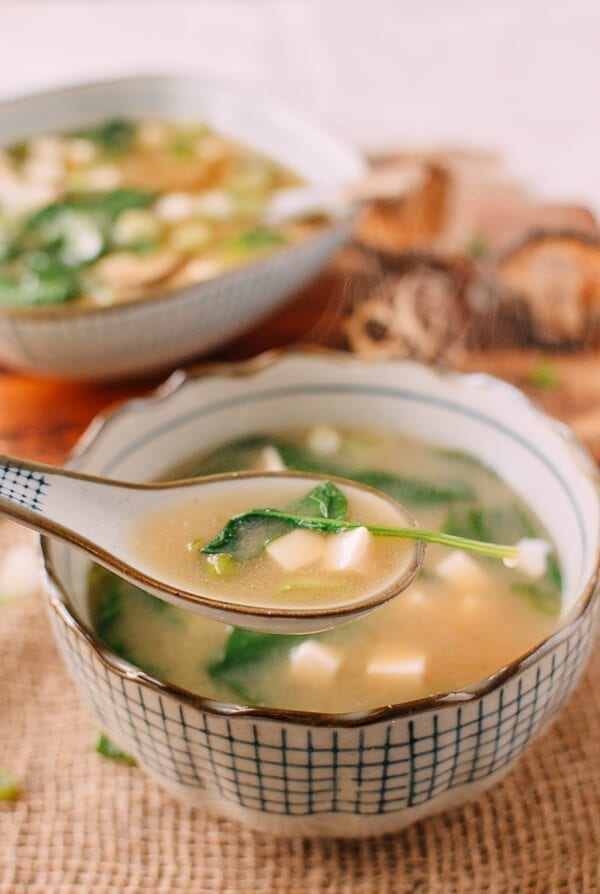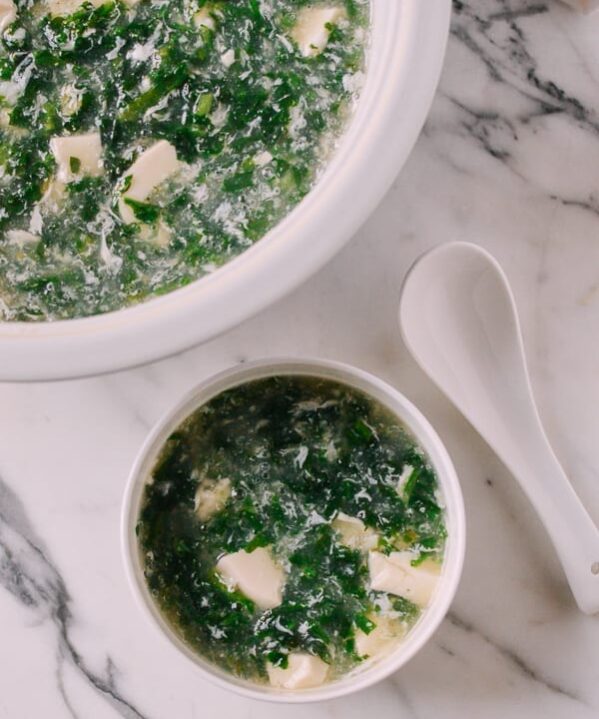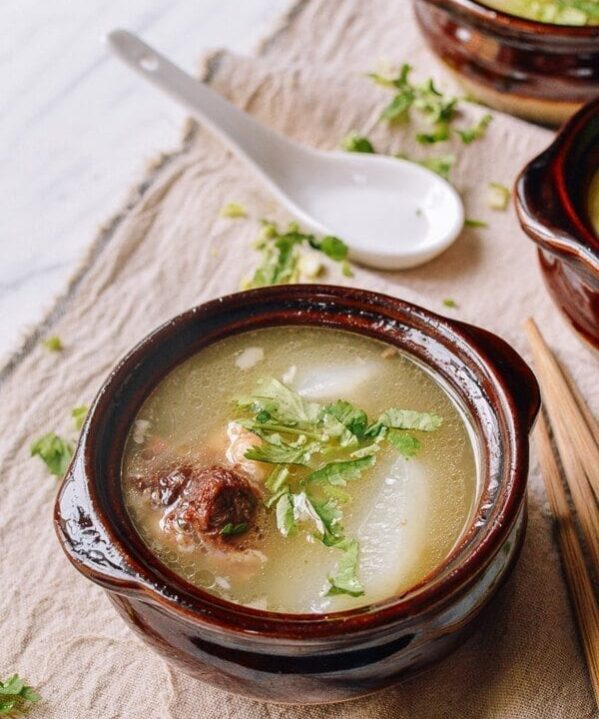I’m a big fan of miso soup. When that small bowl of mystically cloudy broth is set down in front of me, alongside the bare bones yet wonderfully reliable iceberg salad with carrot ginger dressing, all is right in the world (bit of an overstatement, but I’ll run with it).
Homemade Miso Soup Is Better
But the popularity and mainstream prevalence of sushi means that it’s all too likely that most miso soups are probably just cloudy bowls of MSG-laden broth and miso paste.
And it seems like that’s all there is to it. Miso soup is just one of those dishes that seems easy to make. Spoon some miso paste into some broth–badabing, badaboom, you’ve got miso soup, right?
Not so.
When I went to make this Superfood Miso Soup, I discovered that everyone’s favorite companion to their avocado salmon rolls and bento boxes is actually a wonderfully complex little soup of layered seafood flavors. Which is why I’ve decided that homemade miso soup is the way to go (shocker, I know).
A Superfood Version
This recipe is a “superfood” version of your basic miso soup, using a homemade dashi stock made with dried kombu (kelp), shiitake mushrooms, and bonito flakes. I also add soft tofu, lots of healthy spinach, and scallions, in addition to the miso.
What results is a much heartier miso soup than you might be used to from your go-to sushi place, one that you could even have as a light meal by itself. Since making this, I keep a tub of miso paste in the fridge. It lasts forever and is always there waiting when you want to whip up a batch of miso soup.
Miso Soup Recipe Instructions
Rinse the kombu and dried shiitake mushrooms under cold running water, and then add to a medium stockpot.
Add 12 cups water, and allow to soak for 1 hour.
After soaking, place the pot over medium heat, and allow the stock to come up to just a simmer. Fish out the kombu, increase the heat to high, and bring to a boil. Once boiling, reduce the heat to low and add the bonito flakes (Katsuobushi). Simmer for 20 minutes, stirring occasionally.
Strain the resulting dashi stock into a medium saucepan to make your soup (reserving the shiitake mushrooms), and place it over medium low heat. Cut the soft tofu into ½-inch cubes and set aside. Whisk the white miso paste into the stock until fully incorporated. Add the tofu, spinach, and scallions.
Slice a couple of your shiitake and add those to the pot as well. Simmer for another couple minutes…
And serve your Superfood miso soup hot!
Superfood Miso Soup
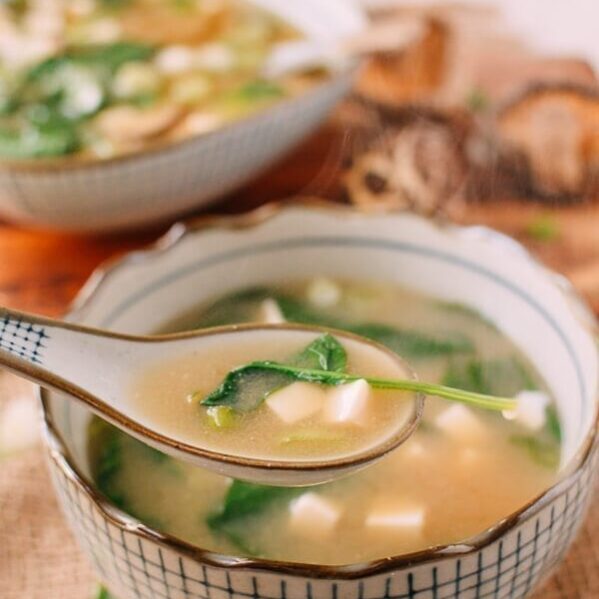
Ingredients
- 2 6-inch square pieces of kombu
- 6 dried shiitake mushrooms
- 12 cups water (2.8 L)
- 1 cup bonito flakes (Katsuobushi)
- 12 ounces soft tofu (340g)
- 5 tablespoons white miso paste
- 2 cups baby spinach
- 2 scallions (chopped)
Instructions
- Rinse the kombu and dried shiitake mushrooms under cold running water, and then add to a medium stockpot. Add 12 cups water, and allow to soak for 1 hour.
- After soaking, place the pot over medium heat, and allow the stock to come up to just a simmer. Fish out the kombu, increase the heat to high, and bring to a boil. Once boiling, reduce the heat to low and add the bonito flakes. Simmer for 20 minutes, stirring occasionally.
- Strain the resulting dashi stock into a medium saucepan to make your soup (reserving the shiitake mushrooms), and place it over medium low heat. Cut the tofu into ½-inch cubes and set aside. Whisk the miso into the stock until fully incorporated.
- Add the tofu, spinach, and scallions. Slice a couple of your shiitake and add those to the pot as well. Simmer for another couple minutes and serve.
nutrition facts
